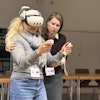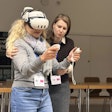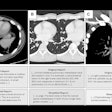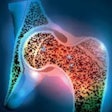
LONDON (Reuters Life!), Sep 7 - Using mobile phones near hospital beds or important equipment is dangerous and could switch off ventilators or disrupt pacemakers, Dutch researchers said on Thursday.
The University of Amsterdam researchers recorded nearly 50 incidents of electromagnetic interference from cell phone use in hospitals and classified 75 percent of them as significant or hazardous.
Because of this mobile phones should come no closer than 1 meter to hospital beds and equipment, said the researchers who published their study in BioMed Central's online open access journal Critical Care.
"Critical care equipment is vulnerable to electromagnetic interference by new-generation wireless telecommunication technologies with median distances of about 3 centimeters," they wrote.
The study contradicts a study earlier this year from researchers at the Mayo Clinic who found that 300 tests over a five-month period turned up no noticeable interference with important hospital equipment due to regular mobile phone use.
The Dutch team -- which tested 61 different medical devices -- found that most of the incidents stemmed from the latest General Packet Radio Service (GPRS) signal, a new-generation technology that allows things such as wireless Internet access.
Other malfunctions they attributed to electromagnetic interference included complete stops with no alarms in syringe pumps and incorrect pulsing by an external pacemaker.
Last Updated: 2007-09-06 15:50:19 -0400 (Reuters Health)
Related Reading
Better technology reduces cell phone interference with medical equipment, October 26, 2005
Copyright © 2007 Reuters Limited. All rights reserved. Republication or redistribution of Reuters content, including by framing or similar means, is expressly prohibited without the prior written consent of Reuters. Reuters shall not be liable for any errors or delays in the content, or for any actions taken in reliance thereon. Reuters and the Reuters sphere logo are registered trademarks and trademarks of the Reuters group of companies around the world.

















